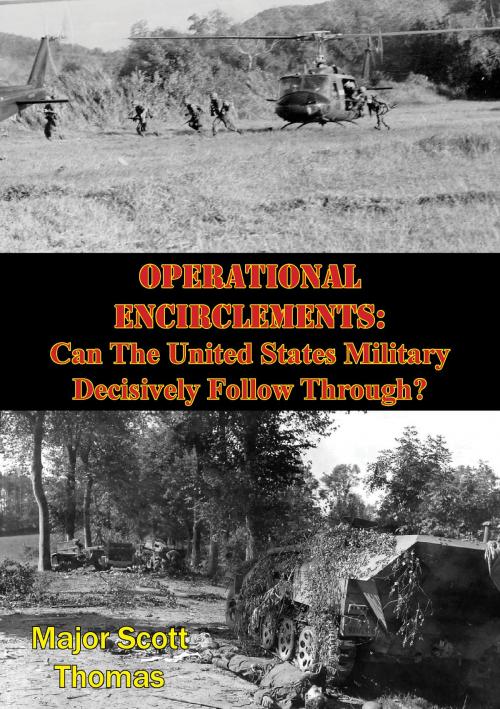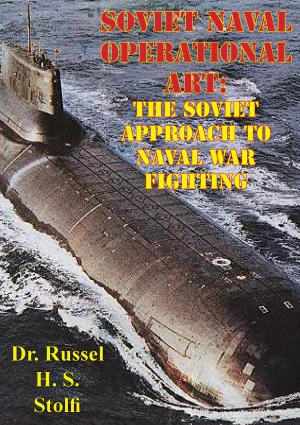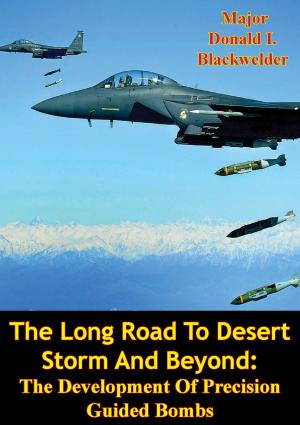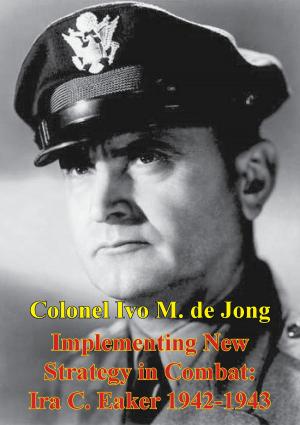Operational Encirclements: Can The United States Military Decisively Follow Through?
Nonfiction, History, Middle East, Persian Gulf War, Military| Author: | Major Scott Thomas | ISBN: | 9781786253958 |
| Publisher: | Tannenberg Publishing | Publication: | November 6, 2015 |
| Imprint: | Tannenberg Publishing | Language: | English |
| Author: | Major Scott Thomas |
| ISBN: | 9781786253958 |
| Publisher: | Tannenberg Publishing |
| Publication: | November 6, 2015 |
| Imprint: | Tannenberg Publishing |
| Language: | English |
This study is a historical analysis of how encirclement operations have been and still are important offensive operations. These operations need to be given priority in planning and execution by the United States Military. Encirclement operations have proven to be decisive military operations throughout history; regardless of the composition and disposition of the enemy encircled. The U.S. military has maintained the decisive edge on the battlefield for over sixty years. Even with the benefits of technology, air supremacy, firepower, mobility, and maneuver, the U.S. military has not yet been completely successful in planning and executing encirclement operations. Today the U.S. military is arguably the best equipped and trained force in history. Even with this professional force, it is questionable whether the U.S. military could successfully execute an encirclement operation. Therefore this monograph provides a historical examination as to why the U.S. military has been unable to reap the benefits of the offensive maneuver of encirclement.
To accomplish this examination, this monograph conducts an analysis of four historical case studies: The Argentan-Falaise Pocket, the Battle of Ia Drang, Doctrinal Revolution from 1986-2001, and Operation Anaconda. The analysis identifies the U.S. military has placed an over reliance on firepower to replace the maneuver of ground combat units. Secondly, this monograph also argues the U.S. military has placed too much emphasis on technology. This belief in technology has reduced the number of ground combat units employed in offensive operations. Additionally, U.S. military doctrine historically has not provided the foundation necessary to support and encourage the planning and execution of encirclement operations. These deficiencies together have prevented the U.S. military from capitalizing on the decisive nature resulting from the speed and shock of correctly executed encirclement operations.
This study is a historical analysis of how encirclement operations have been and still are important offensive operations. These operations need to be given priority in planning and execution by the United States Military. Encirclement operations have proven to be decisive military operations throughout history; regardless of the composition and disposition of the enemy encircled. The U.S. military has maintained the decisive edge on the battlefield for over sixty years. Even with the benefits of technology, air supremacy, firepower, mobility, and maneuver, the U.S. military has not yet been completely successful in planning and executing encirclement operations. Today the U.S. military is arguably the best equipped and trained force in history. Even with this professional force, it is questionable whether the U.S. military could successfully execute an encirclement operation. Therefore this monograph provides a historical examination as to why the U.S. military has been unable to reap the benefits of the offensive maneuver of encirclement.
To accomplish this examination, this monograph conducts an analysis of four historical case studies: The Argentan-Falaise Pocket, the Battle of Ia Drang, Doctrinal Revolution from 1986-2001, and Operation Anaconda. The analysis identifies the U.S. military has placed an over reliance on firepower to replace the maneuver of ground combat units. Secondly, this monograph also argues the U.S. military has placed too much emphasis on technology. This belief in technology has reduced the number of ground combat units employed in offensive operations. Additionally, U.S. military doctrine historically has not provided the foundation necessary to support and encourage the planning and execution of encirclement operations. These deficiencies together have prevented the U.S. military from capitalizing on the decisive nature resulting from the speed and shock of correctly executed encirclement operations.




![Cover of the book Letters On Strategy Vol. II [Illustrated Edition] by Major Scott Thomas](https://www.kuoky.com/images/2015/november/300x300/9781786253699-S3oe_300x.jpg)


![Cover of the book Air Power in Three Wars: World War II, Korea, Vietnam [Illustrated Edition] by Major Scott Thomas](https://www.kuoky.com/images/2015/november/300x300/9781786250728-rDQY_300x.jpg)

![Cover of the book Helicopters in Irregular Warfare: Algeria, Vietnam, and Afghanistan [Illustrated Edition] by Major Scott Thomas](https://www.kuoky.com/images/2014/august/300x300/9781782895152-A0GJ_300x.jpg)




![Cover of the book Conquering The Night — Army Air Forces Night Fighters At War [Illustrated Edition] by Major Scott Thomas](https://www.kuoky.com/images/2015/november/300x300/9781786252371-lfdB_300x.jpg)
